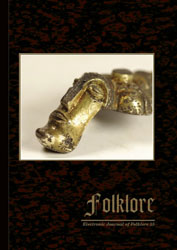Finding Folk Religion: An Archaeology of ‘Strange’ Behaviour
Finding Folk Religion: An Archaeology of ‘Strange’ Behaviour
Author(s): Sonja HukantaivalSubject(s): Customs / Folklore
Published by: Eesti Kirjandusmuuseum
Keywords: folk/popular/vernacular religion; historical archaeology; multidisciplinarity; ritual deposit
Summary/Abstract: Archaeology is not only about describing things; we also seek to understand what we find. Sometimes a find can seem puzzling, unexpected in the context in question. It is argued here that evidence of non-Christian elements of religiosity in a historical context can constitute such surprising finds. These finds become less confusing in the light of other sources, such as folklore accounts and historical records. Still, archaeology can offer something not accessible to other disciplines. This paper discusses the phenomenon of folk religion, and the ways that we can take to find the meanings behind the material remains of practices, which may perhaps seem odd to us. A multidisciplinary approach is favoured, and the contribution of archaeology is crucial in gaining information about past practices. The paper also offers a short survey of some archaeological approaches to questions of folk religion. Another issue addressed is why we might be surprised to find evidence of ‘strange’ practices in historical contexts. It is suggested here that historical constructs about the ‘civilising’ effects of Christianity, Reformation, and Enlightenment, respectively, have affected the way that religiosity has been seen in the context of historical Europe.
Journal: Folklore: Electronic Journal of Folklore
- Issue Year: 2013
- Issue No: 55
- Page Range: 99-124
- Page Count: 26
- Language: English

